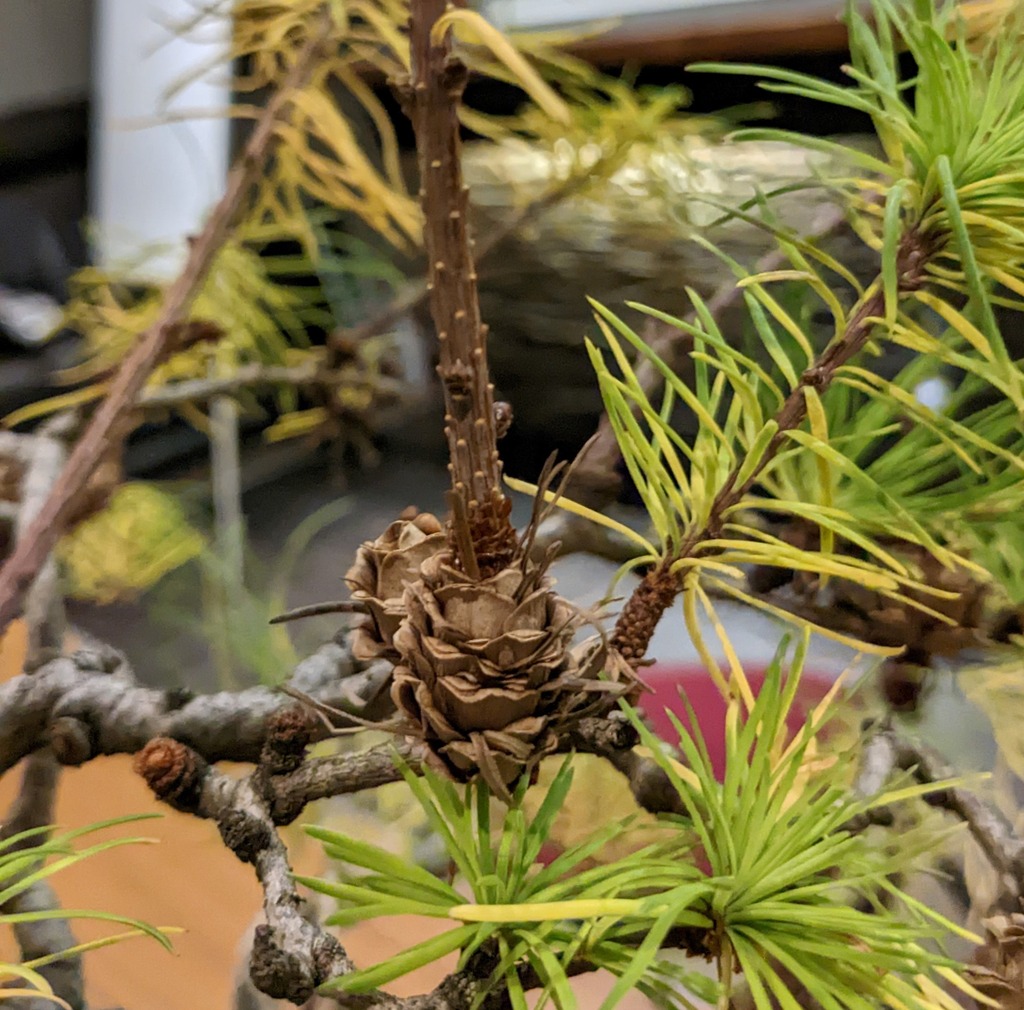After establishing trunk and branch structure, ramification (a fancy word for ‘branching’) of branches and foliage (as well as roots) is a key goal of bonsai. This makes a tree look older and more sophisticated, and gives the bonsai enthusiast options for continued development of the tree.
Ramification is created by branching the stems. Stem branching usually* requires buds, as a new bud creates a new stem. The pattern of stem branching for a particular species will depend on its ‘phyllotaxy’ (leaf morphology) and pattern of buds.
Usually in bonsai we don’t want more than two stems from the same location, the general guidance is to fork into two at any given junction. This is because strong growth of multiple branches at a junction leads to a bulging area on the trunk which bonsai judges don’t like. In the real world, many trees have reverse taper and bulging branch junctions though, so it’s your call. To avoid this situation, remove buds which are in places you don’t want by rubbing or cutting them off.
To improve ramification, you need to encourage as much budding as quickly as possible, then select the buds you want to develop. Pruning the growing tip is the main way to encourage budding, because pruning removes the apical bud (the dominant bud at the end of the stem), diverts resources into buds lower down the stem and sensitises those buds to respond to auxins and develop into shoots. In deciduous trees this should result in at least two buds generating from the stem instead of the one which was there. Another great way to create ramification on deciduous trees is through bud pinching – see Harry Harrington’s detailed explanation of how to do this. Bud pinching removes the entire primary meristem except for two outer leaves, this encourages the buds at those leaf axils to grow, along with two new buds at their bases.
Different species have differing abilities to respond to pruning, so try to get a sense by observing your tree of how well it will cope. Deciduous trees are designed for regeneration so in general they take pruning reasonably well, although if you take it too far they might send out suckers instead of new buds from the branches. With evergreen conifers you want to ensure there is some foliage and at least some buds remaining after you prune, otherwise it may not regenerate (unless it’s a thuja, or a yew, these guys are refoliating machines). I have cedrus seedlings in my collection and by cutting back the apical leader from not long after they germinated, and every year since, they have become extremely bushy and well-ramified (although, at the cost of developing a think trunk).

Anything which stops or prevents tip extension will drive bud activation and ramification further back on the tree. In the case of conifers, the presence of flowers on the growth tips (as you see in juniper) has this effect as well, and can cause back budding. Lammas growth (a second flush in summer) can give you another round of ramification as long as you’ve pruned beforehand (otherwise it will just add to the existing stems).
Research has found that bud outgrowth is “controlled by plant hormones, including auxin, strigolactones, and cytokinins (CKs); nutrients (sugars, nitrogen, phosphates) and external cues”.ref In particular the sugar sucrose has been identified as a key driver for promoting bud outgrowth and accumulating cytokinins – this is generated by photosynthesis.
In one study on apple trees, foliar application of a synthetically produced cytokinin 6-benzylaminopurine (BA) was found to generate three times the lateral bud growth on currently growing shoots compared to controls (but not on old growth)ref and at the same time reduced the length of the main stem. BA was used to encourage better growth of bean sprouts in China before being bannedref and has been shown to increase the number of leaves (ramification!) on melaleuca alternifolia treesref (melaleuca is the source of tea tree oil), and on some conifersref. Could BA (also known as 6 BAP) be useful in bonsai? You can (like most things) buy this product in foil bags on ebay, but there is a product in the orchid world called Keiki paste which also contains 6 BAP – so maybe some judicious use of ‘crazy keiki cloning paste‘ might also help ramification and shoot development in your trees?ref You can also purchase BAP (as its also known) from vendors involved in hydroponics and suchlike as it’s used in in-vitro plant micropropagation.
If you baulk at paying £18 for 7ml of keiki paste, there is one other source of cytokinins which is a lot cheaper, more sustainable and clearer in its provenance – compost. This study found that compost created particularly from waste collected throughout springref contained 6 BAP. Frustratingly there weren’t any free to read articles analysing compost leachate for cytokinin content, but if it’s in solid compost it’s a fair assumption there are cytokinins in leachate as well. Which makes me feel a lot better about the £300 I recently spent on a Hotbin composter! Which incidentally, produces gallons of leachate, which can be diluted and added as a liquid fertiliser.
* I’ve recently read a study which states that “apical meristems can be surgically divided into at least six parts and these then become autonomous apical meristems.”ref What this suggests is that you could slice growing tips into 6 (or better, two since we don’t want more than two stems from a node) and they would become two stems instead of one! One to try next spring.
** By the way – it’s not auxins which cause apical dominance! Check out page 215 of this book, it’s nutritional status and phyllotaxy which determine the apical stem’s sensitivity to auxin which is present.











